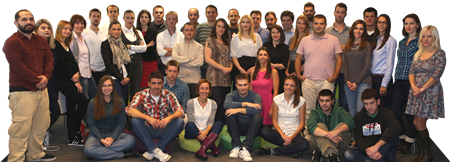IMANUEL VELIKOVSKI - SVETOVI U SUDARU
| Cena: |
| Želi ovaj predmet: | 5 |
| Stanje: | Polovan bez oštećenja |
| Garancija: | Ne |
| Isporuka: | AKS BEX City Express Pošta CC paket (Pošta) DExpress Post Express Lično preuzimanje |
| Plaćanje: | Tekući račun (pre slanja) PostNet (pre slanja) Ostalo (pre slanja) Lično |
| Grad: |
Beograd-Stari grad, Beograd-Stari grad |
ISBN: Ostalo
Godina izdanja: 1982
Oblast: Astronomija
Jezik: Srpski
Autor: Strani
IMANUEL VELIKOVSKI
SVETOVI U SUDARU
Prevod - Jasmina Lukić
Izdavač - Prosveta, Beograd; Jugoslavija, Beograd
Godina - 1982
396 strana
25 cm
Edicija - Biblioteka Zenit - Velike avanture čoveka
Povez - Tvrd
Stanje - Kao na slici, ima posvetu na predlistu, tekst bez podvlačenja
SADRŽAJ:
PROLOG
I U beskrajnoj Vaseljeni
Nebeska harmonija
Poreklo Sunčevog sistema
Poreklo kometa
II Planeta Zemlja
Ledena doba
Mamuti
Ledeno doba i drevni ljudi
Svetska razdoblja
Sunčeva razdoblja
VENERA
I Najneverovatnija priča
Na drugoj strani okeana
II Pedeset dve godine ranije
Crveni svet
Kamena tuča
Nafta
Tama
Zemljotres
`13`
III Uragan
Plima
Nebeska bitka
Kometa Tifon
Varnica
Rušenje neba
IV Zemlja i more ključaju
Sinajska gora
Teofanija
Car Jahu
V Istok i zapad
Preokretanje Zemljinih polova
Pomerene strane sveta
Menjaju se vreme i godišnja doba
VI Sjen smrtni
Ambrozija
Reke mleka i meda
Jerihon
VII Kamenje se zadržalo u vazduhu
Faeton
Atlantida
Poplave u Deukalionovo i Ogigovo vreme
VIII Period dug pedeset i dve godine
Oprosna godina
Radanje Venere
Plamteća zvezda
Četvoroplanetni sistem
Jedna od planeta je kometa
Kometa Venera
IX Palada Atena
Zevs i Atena
Obožavanje Zornjače
Sveta krava
Bal Zevuv (Belzebub)
Venera u folkloru Indijanaca
X Venerina sinodička godina
Venera se kreće nepravilno
Venera postaje Zornjača
MARS
I Amos
Godina 747. stare ere
Isaija
Argivski tirani
Ponovo Isaija
Majmonides i Spinoza kao tumači Svetog pisma
II Godina 687. stare ere
Ignis e Coelo
Dvadeset treći mart
Obožavanje Marsa
Mars pomera stožer Zemlje
III Šta je prouzrokovalo menjanje Venerine i Marsove orbite
Kada je stvorena Ilijada
Huicilopoktli
Tao
Yuddha
Bundahis
Posečeni Lucifer
IV Bog-mač
Fenris
Vreme mača, vučje vreme
Synodos
Rušitelj zidova
V Marsovi ati
Silni
Uzorci sa drugih planeta
Arhandeli
Obožavanje planeta u Judeji u sedmom veku stare ere
VI Opšta amnezija
Folklor
O `unapred datim` predstavama kod ljudi
Prizori na nebu
Verodostojnost zbivanja i njihovo subjektivno tumačenje
VII Pomereni polovi
Hramovi i obelisci
Sunčanik
Vodeni časovnik
Hemisfera putuje na jug
VIII Godina od tri stotine šezdeset dana
Poremećeni meseci
Godina od deset meseci
Menjanje kalendara
IX Mesec i Mesečevi krateri
Planeta Mars
Marsova atmosfera
Toplotna ravnoteža Marsa
Gasovi na Veneri
Toplotna ravnoteža Venere
Kraj
EPILOG
Pred mnogim problemima
Napomene
Spisak ilustracija
`In the book`s preface, Velikovsky summarized his arguments:
Worlds in Collision is a book of wars in the celestial sphere that took place in historical times. In these wars the planet Earth participated too. [...] The historical-cosmological story of this book is based in the evidence of historical texts of many people around the globe, on classical literature, on epics of the northern races, on sacred books of the peoples of the Orient and Occident, on traditions and folklore of primitive peoples, on old astronomical inscriptions and charts, on archaeological finds, and also on geological and paleontological material.
The book proposed that around the 15th century BCE, Venus was ejected from Jupiter as a comet or comet-like object, passed near Earth (an actual collision is not mentioned). The object changed Earth`s orbit and axial inclination, causing innumerable catastrophes which were mentioned in early mythologies and religions around the world. Fifty-two years later, it passed close by again, stopping the Earth`s rotation for a while and causing more catastrophes. Then, in the 8th and 7th centuries BCE, Mars (itself displaced by Venus) made close approaches to the Earth; this incident caused a new round of disturbances and disasters. After that, the current `celestial order` was established. The courses of the planets stabilized over the centuries and Venus gradually became a `normal` planet.
These events lead to several key statements:
Venus must be still very hot as young planets radiate heat.
Venus must be rich in petroleum gases, and hydrocarbons.
Venus has an abnormal orbit in consequence of the unusual disasters that happened.
Velikovsky suggested some additional ideas that he said derived from these claims, including:
Jupiter emits radio noises.
The magnetosphere of the Earth reaches at least up to the moon.
The sun has an electric potential of approximately 1019 volts.
The rotation of the Earth can be affected by electromagnetic fields.
Velikovsky arrived at these proposals using a methodology which would today be called comparative mythology - he looked for concordances in myths and written history of unconnected cultures across the world, following a literal reading of their accounts of the exploits of planetary deities. In this book, he argues on the basis of ancient cosmological myths from places as disparate as India and China, Greece and Rome, Assyria and Sumer. For example, ancient Greek mythology asserts that the goddess Athena sprang from the head of Zeus. Velikovsky identifies Zeus (whose Roman counterpart was the god Jupiter) with the planet Jupiter. Velikovsky identifies Athena (the Roman Minerva) with the planet Venus. This myth, along with others from ancient Egypt, Israel, Mexico, etc. are used to support the claim that `Venus was expelled as a comet and then changed to a planet after contact with a number of members of our solar system` (Velikovsky 1972:182).`
Ako Vas nešto zanima, slobodno pošaljite poruku.
Immanuel Velikovsky Worlds In Collision
1. Svakog dana, bilo kad, na mojoj adresi sa Limunda/Kupinda.
2. Svakog radnog dana posle 15h na Zelenom vencu ili Trgu republike.
Šaljem u inostranstvo, primam uplate preko servisa kao što su Pay Pal, RIA, Western Union (otvoren sam i za druge mogućnosti, javite se pre kupovine i dogovorićemo se).
Kao način slanja stavio sam samo Poštu i Postexpress jer sam s njima najviše sarađivao i vrlo sam zadovoljan, ali na Vaš zahtev mogu da šaljem i drugim službama.
Besplatna dostava na knjigama koje su obeležene tako se odnosi samo na slanje preporučenom tiskovinom.
Predmet: 79390945











